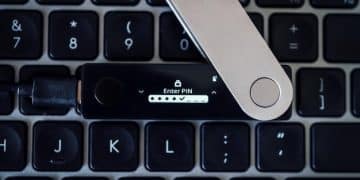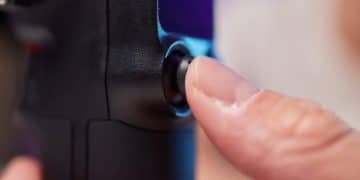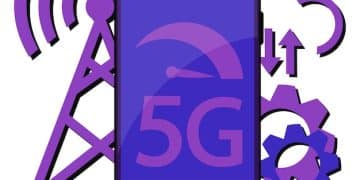Troubleshooting Common Bluetooth Problems on Windows 11
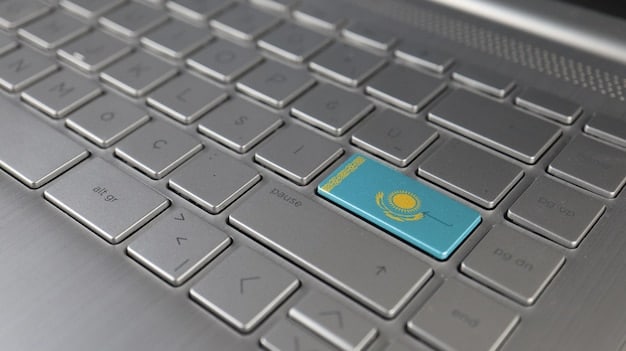
Troubleshooting common Bluetooth connection problems on Windows 11 involves checking device compatibility, ensuring Bluetooth is enabled, updating drivers, and resolving interference, often fixable through Windows settings and device manager.
Experiencing Bluetooth connectivity issues on your Windows 11 device can be frustrating. This guide will help you troubleshoot common Bluetooth connection problems on Windows 11, ensuring your devices pair seamlessly and function properly.
Understanding Bluetooth Connectivity on Windows 11
Bluetooth has become an essential technology for connecting various devices, from wireless headphones and speakers to keyboards and mice. In Windows 11, Bluetooth connectivity is generally reliable, but occasional issues can arise. Understanding the basics of how Bluetooth works on Windows 11 can help you diagnose and fix problems more effectively.
The process starts with ensuring that your device supports Bluetooth and that Bluetooth is enabled in Windows settings. When connecting a new device, Windows 11 searches for discoverable Bluetooth devices nearby. Once found, you can initiate the pairing process, which usually involves entering a PIN or confirming a connection on both devices. Proper drivers are crucial for Bluetooth adapters to function correctly. Outdated or corrupted drivers are often the cause of connectivity issues.
Bluetooth operates on the 2.4 GHz frequency band, which is also used by Wi-Fi and other wireless devices. This can sometimes lead to interference, causing dropped connections or poor audio quality. The range of Bluetooth devices is typically around 30 feet (10 meters), but this can be affected by obstacles like walls and furniture. By keeping these factors in mind, you can systematically troubleshoot and resolve common Bluetooth problems.
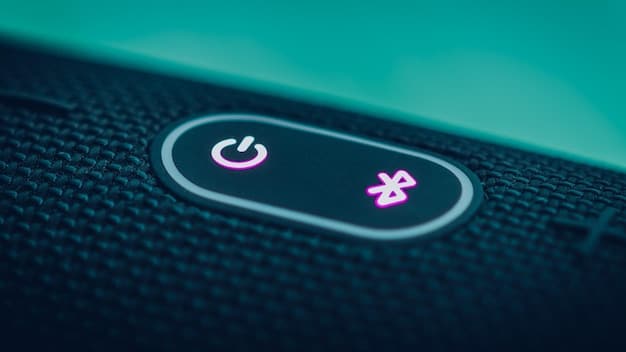
Verifying Bluetooth is Enabled
The first step in troubleshooting any Bluetooth issue is to ensure that Bluetooth is actually turned on in Windows 11. It might seem obvious, but sometimes the setting gets accidentally toggled off, especially after system updates or restarts.
To check if Bluetooth is enabled, follow these steps:
1. Open the Settings app. You can do this by pressing `Win + I` on your keyboard.
2. Click on “Bluetooth & devices” in the left sidebar.
3. Look for the Bluetooth toggle switch at the top of the page. If it’s turned off, toggle it on.
If Bluetooth is already enabled, try toggling it off and then back on. This can sometimes reset the Bluetooth adapter and resolve minor connectivity issues. Also, ensure that Airplane mode is turned off, as it disables all wireless communications, including Bluetooth.
Checking Device Compatibility
Not all devices are created equal, and compatibility issues can certainly cause Bluetooth connectivity problems. Windows 11 needs to support the Bluetooth version of your device.
Consider the following points:
* **Bluetooth Version:** Ensure that your device’s Bluetooth version is compatible with Windows 11. Most modern devices use Bluetooth 4.0 or later, which should work fine. However, older devices with Bluetooth 2.0 or 3.0 might have compatibility issues.
* **Device Drivers:** Install the latest drivers for your Bluetooth device. Sometimes, generic drivers provided by Windows 11 might not work optimally. Check the manufacturer’s website for specific drivers.
* **Device Support:** Some devices might not be fully supported by Windows 11. Check the device’s documentation or the manufacturer’s website to confirm compatibility.
Updating Bluetooth Drivers
Outdated or corrupted Bluetooth drivers are a common cause of connectivity problems. Windows 11 relies on these drivers to communicate with Bluetooth devices, so keeping them up to date is crucial.
Here’s how to update your Bluetooth drivers:
1. Open Device Manager. You can do this by right-clicking the Start button and selecting “Device Manager.”
2. Expand the “Bluetooth” category to see a list of Bluetooth adapters.
3. Right-click on your Bluetooth adapter and select “Update driver.”
4. Choose “Search automatically for drivers.” Windows will search for and install the latest drivers available.
If Windows doesn’t find any updates, you can try manually updating the drivers by downloading them from the manufacturer’s website. Choose “Browse my computer for drivers” and navigate to the folder where you saved the downloaded drivers.
Addressing Bluetooth Interference
Bluetooth operates on the 2.4 GHz frequency band, which is also used by Wi-Fi, cordless phones, and other wireless devices. Interference from these devices can disrupt Bluetooth connections.
Here are some tips to minimize interference:
* **Keep Devices Separate:** Place Bluetooth devices away from other wireless devices and electronic equipment.
* **Reduce Obstacles:** Minimize physical obstacles like walls and furniture between your Bluetooth devices.
* **Change Wi-Fi Channel:** If you’re experiencing interference with Wi-Fi, try changing the Wi-Fi channel on your router.
Using the Bluetooth Troubleshooter
Windows 11 includes a built-in Bluetooth troubleshooter that can automatically diagnose and fix common Bluetooth problems. This tool can identify issues like driver problems, incorrect settings, and hardware conflicts.
To run the Bluetooth troubleshooter:
1. Open the Settings app (`Win + I`).
2. Click on “System” and then “Troubleshoot.”
3. Select “Other troubleshooters.”
4. Find “Bluetooth” in the list and click “Run.”
The troubleshooter will scan your system for Bluetooth issues and attempt to fix them. Follow any on-screen instructions and restart your computer if prompted. The Bluetooth troubleshooter is often very effective in identifying and resolves many common issues. The troubleshooter is a user-friendly tool for anyone who is not extremely tech-savvy. This makes it easy for them to fix their issues.
Restarting Bluetooth Support Service
The Bluetooth Support Service is responsible for managing Bluetooth connections in Windows 11. Sometimes, this service can encounter issues that prevent Bluetooth devices from connecting. Restarting the service can often resolve these problems.
Here’s how to restart the Bluetooth Support Service:
* Press `Win + R` to open the Run dialog box.
* Type `services.msc` and press Enter. This will open the Services window.
* Scroll down and find “Bluetooth Support Service.”
* Right-click on “Bluetooth Support Service” and select “Restart.”
* If the service is not running, select “Start.”
Restarting the service will reset the Bluetooth functionality on your system and may resolve connectivity issues.

Checking Power Management Settings
Sometimes, power management settings can interfere with Bluetooth connectivity. Windows 11 might be configured to turn off the Bluetooth adapter to save power, which can cause connection problems.
To check and adjust power management settings:
1. Open Device Manager.
2. Expand the “Bluetooth” category.
3. Right-click on your Bluetooth adapter and select “Properties.”
4. Go to the “Power Management” tab.
5. Uncheck the box that says “Allow the computer to turn off this device to save power.”
6. Click “OK” to save the changes.
By disabling this setting, you ensure that the Bluetooth adapter remains active even when your computer is idle, preventing potential connection issues.
Troubleshooting Specific Device Issues
Different types of Bluetooth devices may encounter specific problems. Here are some common device-specific issues and how to troubleshoot them:
Wireless Headphones/Speakers
* **Audio Quality:** Poor audio quality can be caused by interference or outdated drivers. Try moving closer to your computer and updating the Bluetooth drivers.
* **Connection Drops:** Frequent connection drops can be due to low battery or compatibility issues. Ensure your headphones/speakers are fully charged and compatible with Windows 11.
* **Pairing Problems:** If you’re having trouble pairing, try resetting the headphones/speakers and re-entering pairing mode.
Keyboards/Mice
* **Lag or Unresponsiveness:** Lag or unresponsiveness can be caused by interference or low battery. Replace the batteries in your keyboard/mouse and move closer to your computer.
* **Connection Drops:** If your keyboard/mouse frequently disconnects, check the power management settings and ensure that the Bluetooth adapter is not being turned off to save power.
* **Pairing Problems:** Pairing problems can occur if the keyboard/mouse is already paired with another device. Reset the device and try pairing it again with your Windows 11 computer.
By addressing these device-specific issues, you can improve the reliability of your Bluetooth connections.
| Key Point | Brief Description |
|---|---|
| ✔️ Check Bluetooth Enablement | Ensure Bluetooth is toggled on in Windows 11 settings. |
| 🛠️ Update Drivers | Keep Bluetooth drivers updated via Device Manager. |
| 📶 Minimize Interference | Reduce interference by keeping devices apart. |
| ⚙ Run Troubleshooter | Use the built-in Bluetooth troubleshooter for automatic fixes. |
Frequently Asked Questions
▼
Bluetooth might not connect due to outdated drivers, interference from other devices, or incorrect settings. Ensure Bluetooth is enabled, update drivers, and minimize interference.
▼
You can update Bluetooth drivers through Device Manager. Expand the Bluetooth category, right-click your adapter, and select “Update driver.” Choose to search automatically for drivers.
▼
Frequent disconnects can be due to low battery, interference, or power management settings. Replace batteries, reduce interference, and check power management settings.
▼
Open Settings, go to System, then Troubleshoot, and select Other troubleshooters. Find Bluetooth in the list and click Run to start the troubleshooter process.
▼
Yes, devices operating on the 2.4 GHz frequency band, such as Wi-Fi routers and cordless phones, can interfere with Bluetooth connections. Keep these devices separate.
Conclusion
Troubleshooting Bluetooth connection problems on Windows 11 involves several steps, from basic checks to more advanced troubleshooting techniques. By systematically addressing each potential issue, you can often resolve connectivity problems and maintain reliable Bluetooth performance, enhancing your overall Windows 11 experience.
